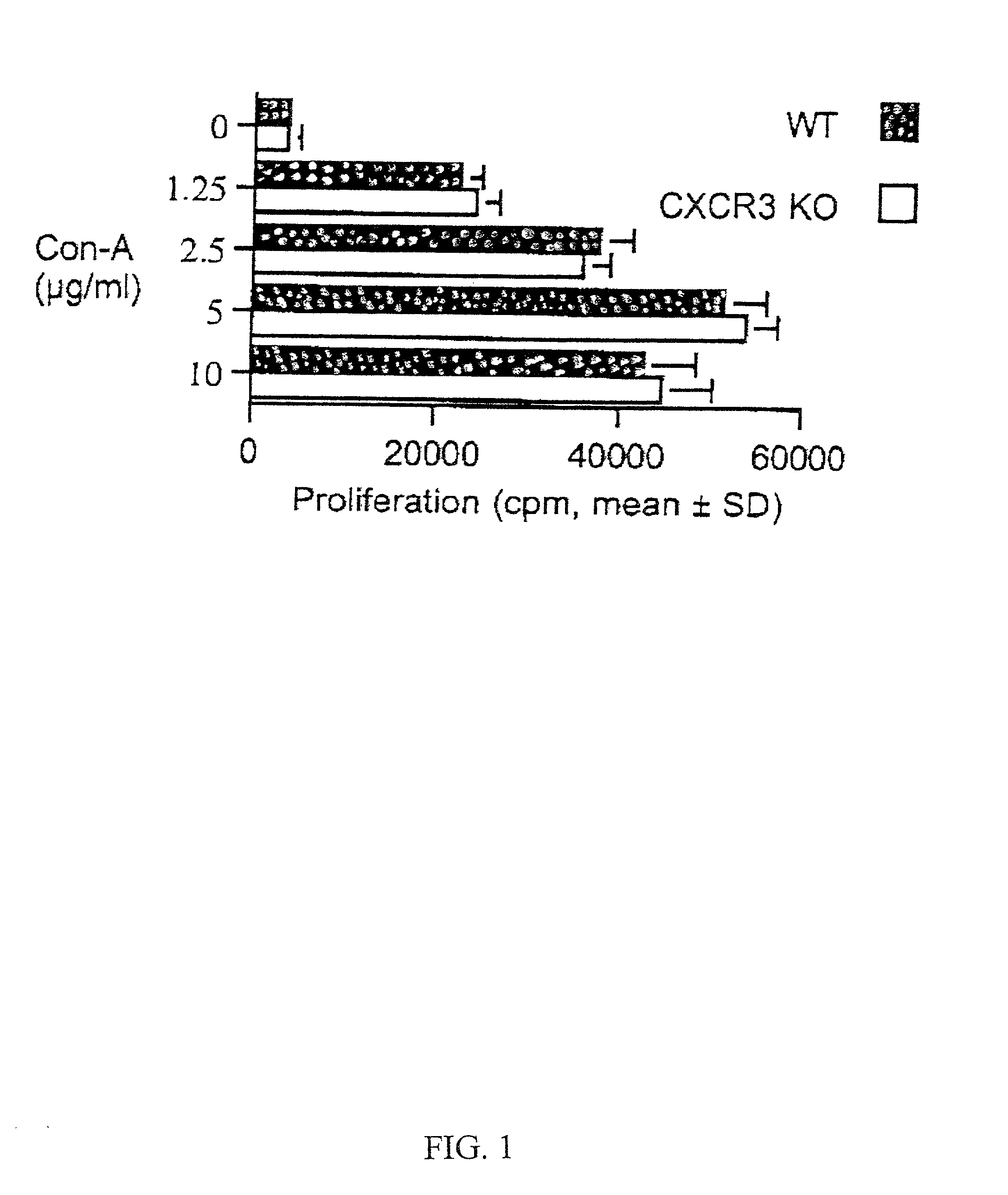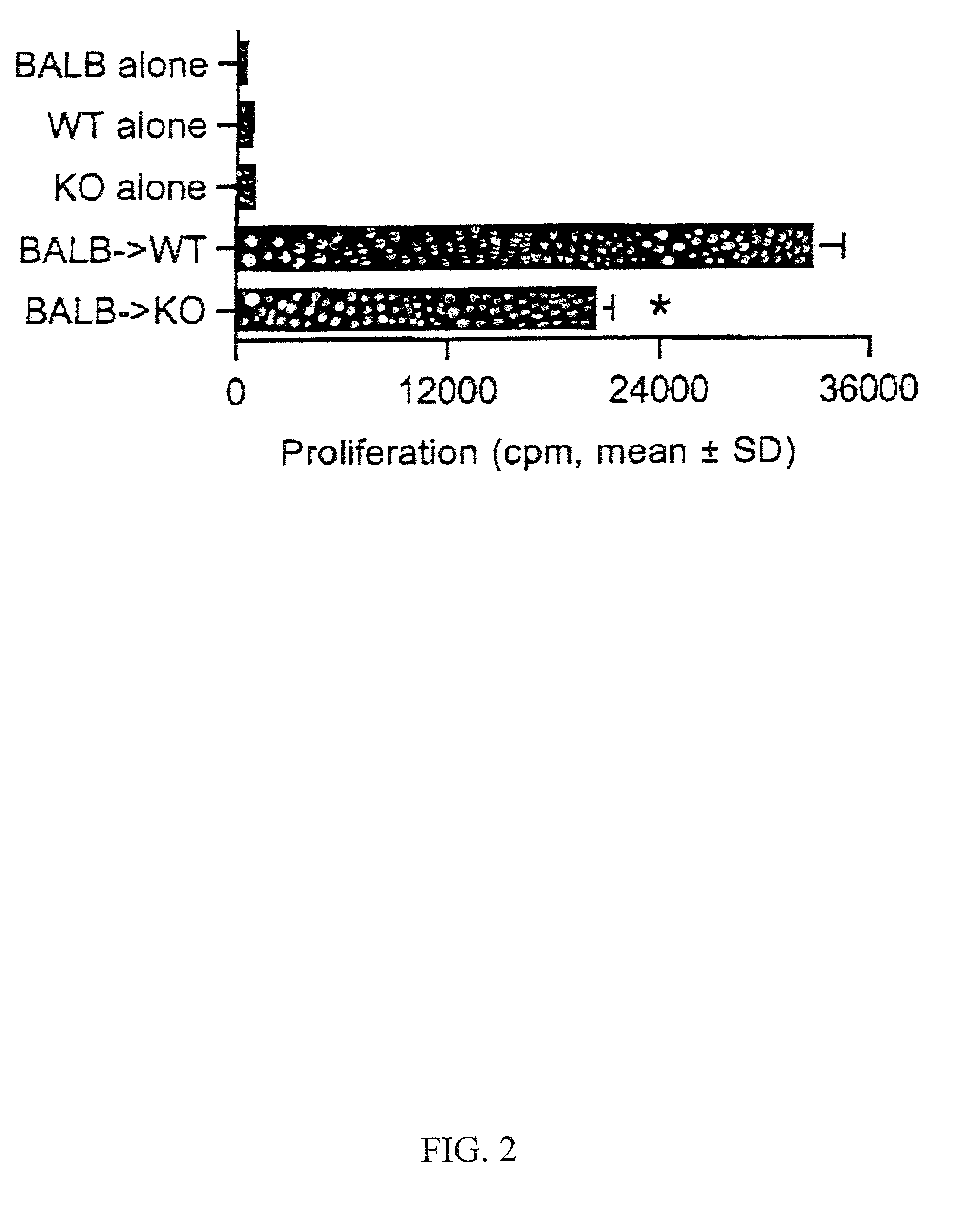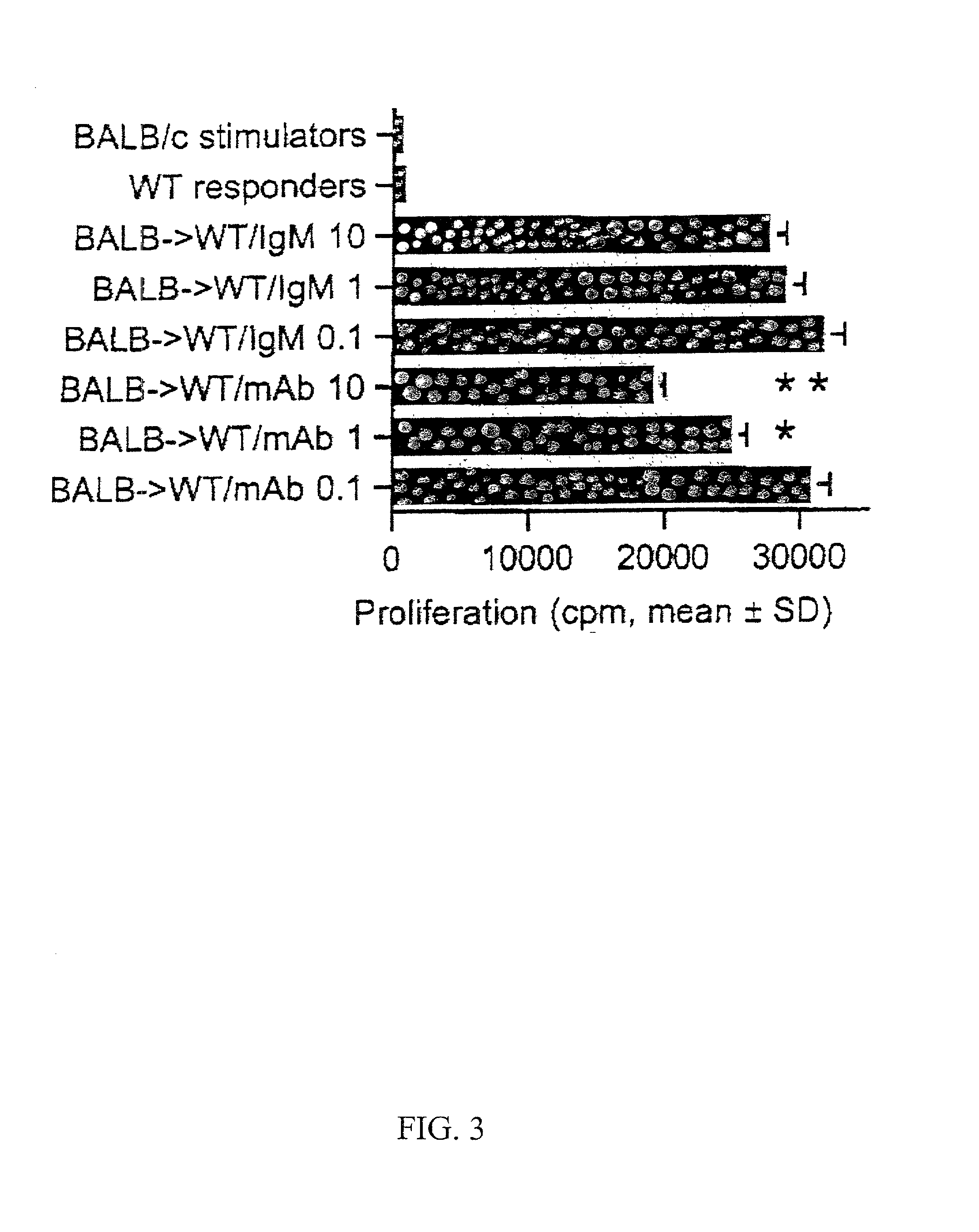Method of treating graft rejection using inhibitors of CXCR3 function
a technology of cxcr3 and inhibitors, which is applied in the direction of peptides, immunoglobulins against animals/humans, cyclic peptide ingredients, etc., can solve the problems of long-term survival of transplanted grafts, inability to remain viable without therapeutic intervention, and inexact match of transplanted graft tissue type with recipient tissue type, etc., to achieve inhibit (reduce or prevent) graft rejection and promote the viability of transplan
- Summary
- Abstract
- Description
- Claims
- Application Information
AI Technical Summary
Benefits of technology
Problems solved by technology
Method used
Image
Examples
example 1
CXCR3 Targeting and Cardiac Transplantation
[0082] Methods
[0083] Mice. CXCR3 KO mice (also referred to as CXCR3- / -) which are homozygous for a targeted deletion of the coding region of the CXCR3 gene were provided by Craig Gerard (Children's Hospital, Boston, Mass.) and bred at Millennium Pharmaceuticals, Inc. (Cambridge, Mass.). The targeted deletion was produced in BALB / c mice (H-2.sup.d) and bred into C56BL / 6 mice (H-2.sup.b). Both BALB / c CXCR3 KO and C57BL / 6 CXCR3 KO mice were used in the study. IP-10 KO mice (also referred to as IP-10- / -, strain B6 / 129, H-2.sup.b) which are homozygous for a targeted gene disruption of the gene encoding IP-10 were provided by Andrew Luster (Massachusetts General Hospital, Boston, Mass.). All other mice were obtained from Jackson Laboratory (Bar Harbor, Me.). These included donor strains and control recipients (BALB / c, C57BL / 6, B6 / 129). BALB / c differs from C57BL / 6 and B6 / 129 at both class I and class II major histocompatibility complex (MHC) loci....
example 2
CXCR3 and Chronic Rejection in Cardiac Allograft Recipients
[0097] Administration of CD4 monoclonal antibody (mAb) can prolong the survival of cardiac allografts in the described murine model (Mottram et al., Transplantation 59:559-565 (1995)). However, the extended survival of grafts in anti-CD4 treated animals is complicated by the development of chronic rejection with florid transplant arteriosclerosis (Hancock et al., Nature Medicine 4:1392-1396 (1998)).
Methods
[0098] Cardiac allografts derived from BALB / c donors were transplanted into CXCR3 KO or CXCR3+ / + control mice (C57BL / 6) as described in Example 1.
[0099] Immunosuppression. CD4 mAb (GK1.5, American Type Culture Collection, Manassas, Va.; Accession No. TIB-207) was administered four times to CXCR3+ / + allograft recipients (6 / group); 250 .mu.g by intraperitoneal injection on day 0 (time of transplantation) and on subsequent days 1, 2 and 3. Cyclosporin A was administered to CXCR3 KO graft recipients as described in Example 1 (g...
example 3
Expression of Chemokines and Chemokine Receptors in Human Cardiac Allografts: Association with CD3+ T Cell Infiltrates and Rejection
[0104] Chemokines function in the recruitment as well as in the activation of leukocytes. However, little is reported on the expression or function of chemokines in human allografts. In this study the expression of RANTES (Ran), MCP-1, Mig, IP-10, SDF-1, lymphotactin (Lt), and eotaxin mRNA in human cardiac allograft biopsies was examined using semiquantitative RT-PCR. The expression of the chemokine receptors CCR1, CCR3, CCR5 and CXCR3 was examined in separate biopsies by immunohistochemistry. Biopsies taken at the same time as the study biopsies were examined for the clinicopathologic diagnosis of rejection using the ISHLT scoring system. A total of 44 biopsies (n=44 patients) were examined by RT-PCR. Rejection grade 1A was found in 6 biopsies and grade 2 in 5 biopsies. No rejection was found in 33 biopsies. The expression of chemokines are summarized ...
PUM
| Property | Measurement | Unit |
|---|---|---|
| concentrations | aaaaa | aaaaa |
| concentrations | aaaaa | aaaaa |
| concentrations | aaaaa | aaaaa |
Abstract
Description
Claims
Application Information
 Login to View More
Login to View More - R&D
- Intellectual Property
- Life Sciences
- Materials
- Tech Scout
- Unparalleled Data Quality
- Higher Quality Content
- 60% Fewer Hallucinations
Browse by: Latest US Patents, China's latest patents, Technical Efficacy Thesaurus, Application Domain, Technology Topic, Popular Technical Reports.
© 2025 PatSnap. All rights reserved.Legal|Privacy policy|Modern Slavery Act Transparency Statement|Sitemap|About US| Contact US: help@patsnap.com



